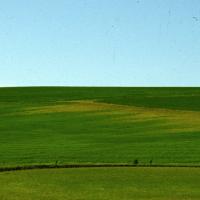Symptoms appear 7 - 10 days after spray application and are slow to appear. Symptoms are generally mild to moderate with registered wheat and barley herbicides, but severe with broadleaf crop grasskillers.
| Chemical name | Example trade name | Chemical name | Example trade name |
|---|---|---|---|
| Fops | Dims | ||
| Clodinafop-propargyl | Topik® | Tralkoxydim | Achieve® |
| Diclofop-methyl | Hoegrass® | Clethodim | Select® |
| Fenoxaprop-p-ethyl | Wildcat® | Tepraloxydim | Aramo® |
| Diclofop-methyl fenoxaprop-p-ethyl | Tristar® | ||
| Fluazifop | ®Fusilade | ||
| Haloxyfop | Verdict® | ||
| Quizalfop | Targa® | ||
| Propaquizafop | Correct® | ||








